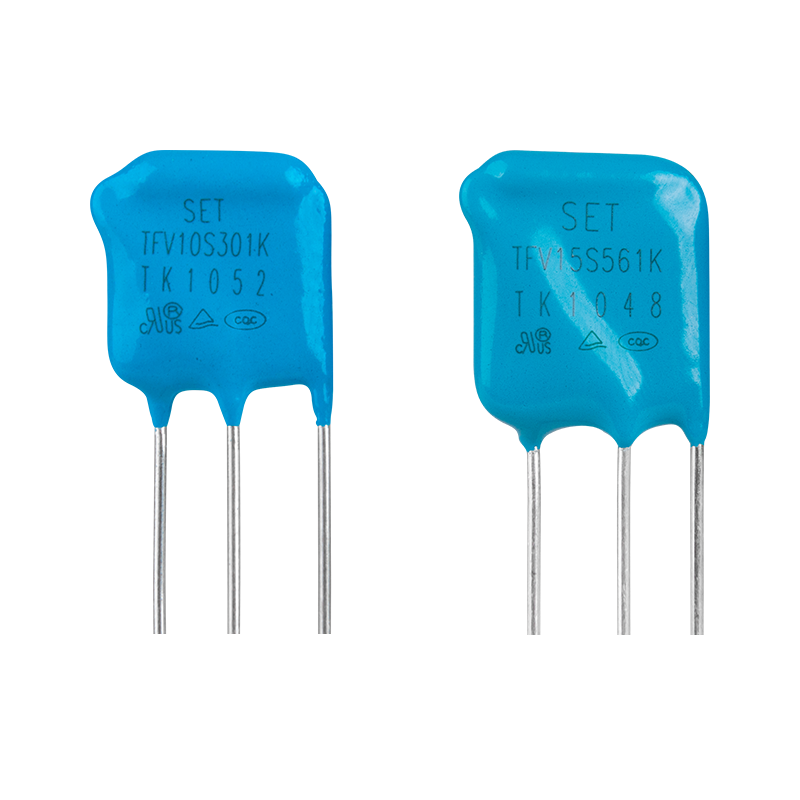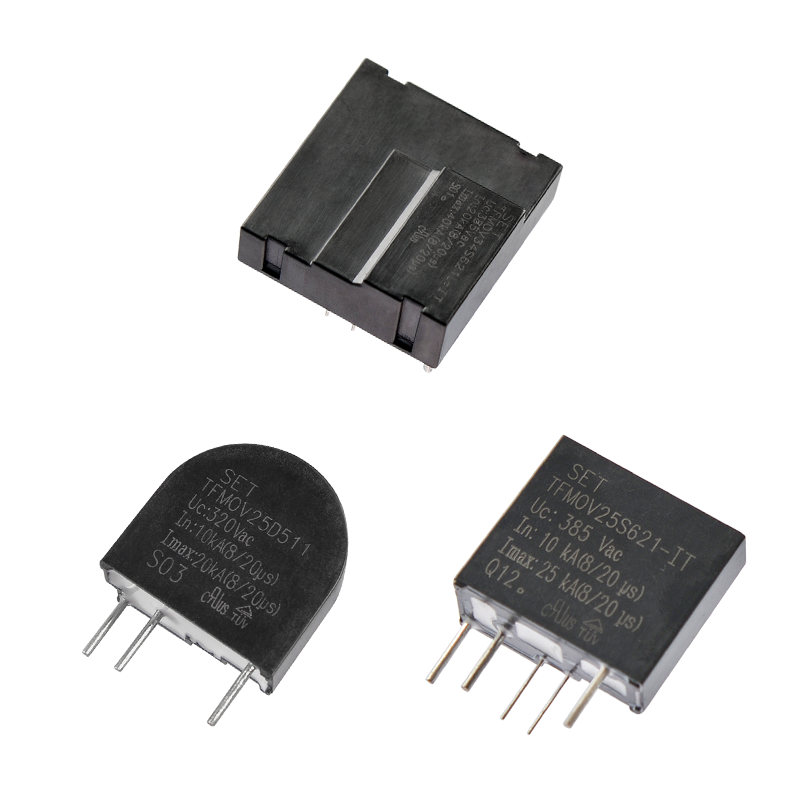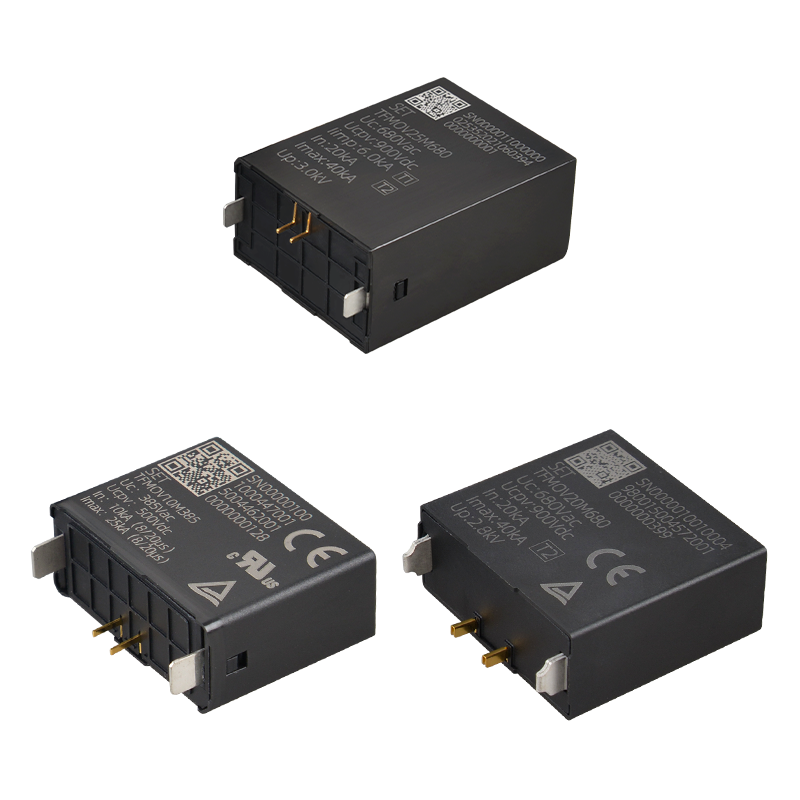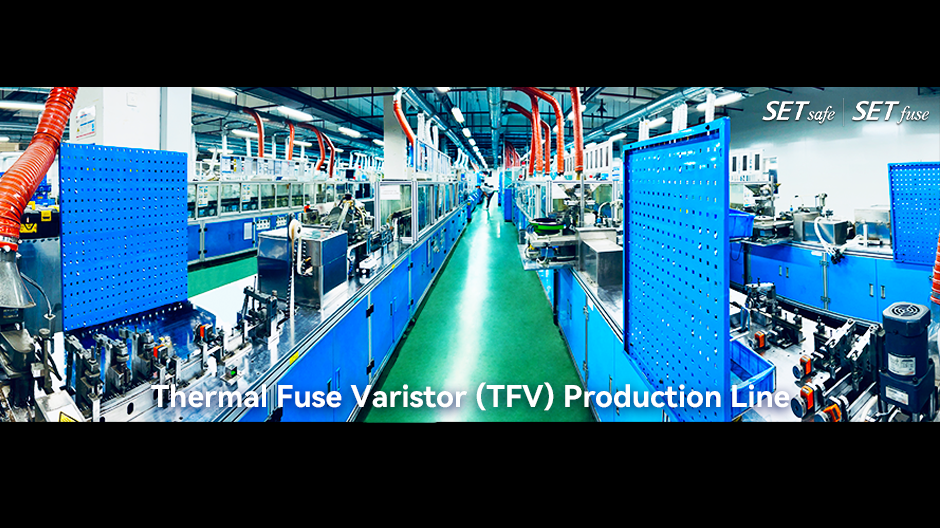Xiamen SET Electronics Co., Ltd.
Thermal Fuse Varistor (TFV) is a varistor that incorporates thermal protection. This product possesses all the features of a standard MOV while offering additional thermal safeguards. In cases where an MOV becomes degraded due to long-term operation or abnormal surges, the leakage current of the MOV continues to increase, potentially leading to overheating and even fire. The thermal fuse, consisting of a fusible alloy, within the TFV is highly responsive to abnormal temperatures and triggers an action to disconnect the circuit, thereby preventing the MOV from overheating or catching fire.
Thermal Fuse Varistors (TFV) finds wide application in various fields such as power supplies, industrial equipment, and communication devices that demand high reliability and weather resistance.
SETsafe | SETfuse provides Thermal Fuse Varistors (TFV) with maximum peak current ratings ranging from 5 kA to 10 kA, and maximum continuous voltage ratings from 50 VAC to 510 VAC. These TFVs are equipped with safety certifications such as UL, cUL, TUV, and CQC, and comply with the requirements of RoHS and REACH.
VN
Nominal Varistor Voltage
Voltage, at specified d.c. current used as a reference point in the component characteristic.
IL
Leakage Current
Current passing through the varistor at the max. d.c. voltage, and at a temp. of 25 °C, or any other specified temp.
UCT
Upper Category Temp.
Max. ambient temp. for which a varistor has been designed to operate continuously.
LCT.
Lower Category Temp.
Minimum ambient temp. at which a varistor has been designed to operate continuously.
Max. Peak Current
Max. Peak Current
Max. current per pulse, which may be passed by a varistor at an ambient temp. of 25 °C, for a given number of pulses.
VC
Clamping Voltage
Peak voltage developed across the varistor terminations under standard atmospheric conditions, when passing an 8/20 μs class current pulse.
Voltage Proof
Voltage Proof
Max. peak voltage, which may be applied under continuous operating conditions between the varistor terminations and any conducting mounting surface. (Applicable only to insulated varistors)
CV
Capacitance
Capacitance across the MOV measured at a specified frequency and voltage.
Vac
Max. Continuous a.c. Voltage
Max. a.c. r.m.s. voltage of a substantially sinusoidal waveform (less than 5% total harmonic distortion) which can be applied to the component under continuous operating conditions at 25 °C.
Vdc
Max. Continuous d.c. Voltage
Max. d.c. voltage (with less than 5% ripple) which can be applied to the component under continuous operating conditions at an ambient temp. of 25 °C.
In
Nominal Discharge Current
Crest value of the current through the SPD having a current waveshape of 8/20 µs.
Imax
Max. Discharge Current
Crest value of a current through the SPD having an 8/20 µs waveshape and magnitude according to the manufacturers specification. Imax is equal to or greater than In.
Limited Current
Limited Current UL 1449
In
Nominal Discharge Current
Crest value of the current through the SPD having a current waveshape of 8/20 µs.
Imax
Nominal Discharge Current
Crest value of a current through the SPD having an 8/20 µs waveshape and magnitude according to the manufacturers specification. Imax is equal to or greater than In.
Tf
Rated Functioning Temp.
The Temp. of the TCO which causes it to change its state of conductivity with a detection current up to 10 mA as the only load.
Fusing Temp.
The Temp. of the TCO which causes it to change its state of conductivity with a detection current up to 10 mA as the only load. It is measured with a silicone oil bath in which the Temp. is increased at the rate of (0.5 - 1) °C /min.
Tolerance: Tf +0/-10 ℃(GB 9816, UL 60691, EN 60691, K60691 )
Tolerance: Tf ±7 ℃(J60691)
Th
Holding Temp.
The Max. temp. of product body surface at which a TCO will not change its state of conductivity when conducting rated current for 168 h.
Ur
Rated Voltage
The voltage used to classify a TCO, which is the maximum voltage that TCO allows to carry and is able to cut off the circuit safely.

● Power Supplies
● Home Electrical Appliances
● Industrial Devices
● Surge Protectors
● Telecom Devices

SETsafe | SETfuse Quality Policy
Provide Industry-Leading Products
Raw-materials Supplier
Select critical raw materials: Must be from a manufacturer with quality management system (ISO9001, IATF16949) certification.
Annual or Quarterly Audits.
IQC (Incoming Quality Check)
AQL(MIL-STD-105E), Dimensions, Function, Visual Inspection, RoHS & REACH Test.
Document
Formulate corresponding incoming inspection specifications (01-QA-06-xxx) for each key material according to design data such as material technical indicators.
Testing Equipment and Tools
Projector, Tool Microscope, Digital caliper, Salt Spray Tester, Universal Material Testing Machine, Spectrum Analyzer, etc.
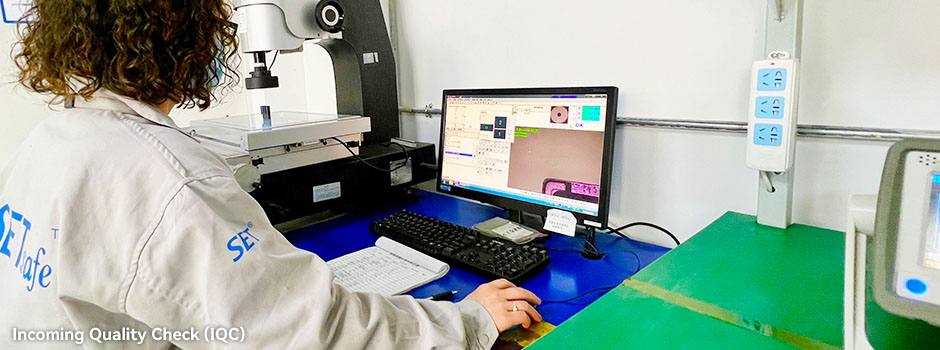
Manufacturing Process
Online Inspection and Testing (Function 100% Testing).
Document
Process Flow Chart.
Failure Mode and Effects Analysis (FMEA).
Quality Control Flow Chart (QCFC).
Standard Inspection Procedure (SIP).
Work Instruction (WI).
Online Testing and Inspection
Static three-parameter detection system.
Resistance test system (100% Testing).
100% Visual inspection.
etc.
IPQC (In Process Quality Control) Inspection
AQL(MIL-STD-105E), Dimensions Inspection, Function Test, Visual Inspection.
FQC ( Final Quality Control)
AQL(MIL-STD-105E), Dimensions Inspection, Function Test, Visual Inspection, RoHS & REACH Test.
Reliability Test
Test specification (01-TE-01-xxx).
Including 29 items of appearance requirements, electrical performance, mechanical performance, Soldering performance, environmental test and Material performance. e.g.
Voltage Protection Level Up Test.
Operating Duty Test.
High temperature and high humidity test
Tensile Test.
Solderability Test.
etc.
OQC (Outgoing Quality Control)
AQL(MIL-STD-105E), Packaging, Labeling, Quantity Inspection.
Agency
Agency (Safety Certificate) Annual, Quarterly Audits.
Management System
ISO9001, (TUV approved and issued certificate).
ISO14001, ISO45001, etc.
Click to view the certificate
Environmental
RoHS & REACH Compliant.
SETsafe | SETfuse

Usage
1. Please do not apply severe vibration, shock or pressure to avoid surface resin or element cracking.
2. Please fix lead wires when bending or cutting. The distance between the bending point and the sealing of MOV shall be greater than 2mm.
3. In order to reduce the surface temperature rise, adding heat insulated shroud is recommended before wave soldering.
4. This curve is for reference only. Please confirm before production to avoid damaging the integrated Thermal Fuse.
Replacement
1. If varistor is visually damaged, please replace it.
2. Varistor is a non-repairable product. For safety sake, please use equivalent varistor for replacement.
Storage
1. Storage Temp. Range: (-40 to +125) °C
2. Relative Humidity : ≤75% RH
3. Do not store the MOV at the high temp., high humidity or corrosive gas environment, to avoid influencing the solder-ability of the lead wires, the product shall be used up within 1 year after receiving the goods.
Environmental Conditions
1. Varistor should not be exposed to the open air, nor direct sunshine.
2. Varistor should avoid rain, water vapor or other condition of high temp. and high humidity.
3. Varistor should avoid sand dust, salt spray, or other harmful gases.
Max. Typical Capacitance of Varistor
The typical capacitance of varistor is listed in the specifications. Designers may refer to it when designing MOV in high frequency circuit.
Installation
Mechanical Stress
Do not knock MOV when installing, to avoid mechanical damage.
Please do not apply severe vibration, shock or pressure to MOV, to avoid surface resin or element cracking.
Application Examples
The application examples below show how the indicator lead on the TFV can be used to indicate that the thermal element has been opened. This signifies that the circuit is no longer protected from transients by the MOV.
1. In this case, the LED is normally on, and is off when the thermal element opens.
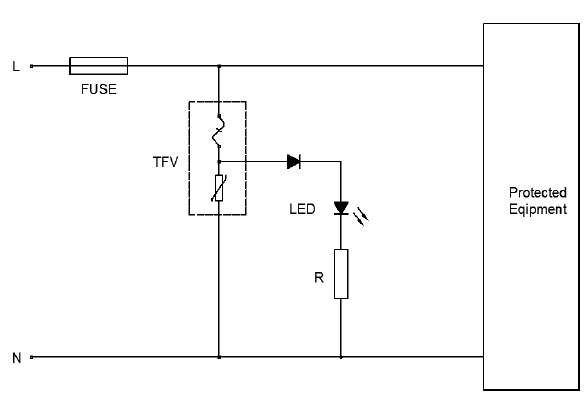
2. This circuit utilizes an optocoupler to provide galvanic isolations between the TFV varistor and the indicating or alarm circuitry.
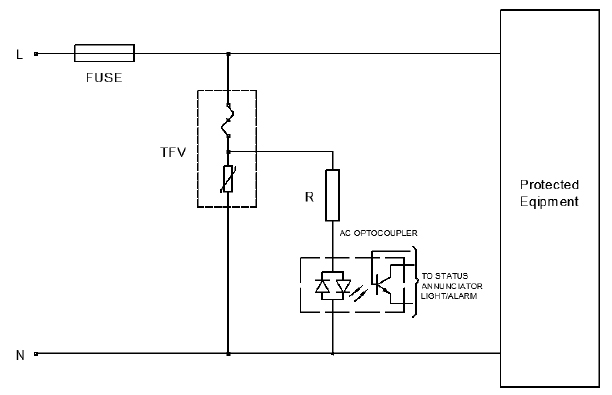
SETsafe | SETfuse

Learn more
Click "Learn more" to jump to the Product Catalog (Datasheet) download page to download and read.
For more information, please contact SETsafe | SETfuse: sales@SETfuse.com.

































 Over Temperature Protection(87)
Over Temperature Protection(87)




 Over Voltage Protection(243)
Over Voltage Protection(243)








































 Over Current Protection(63)
Over Current Protection(63)
























 Active Protection(19)
Active Protection(19)






 Accessories(3)
Accessories(3)





